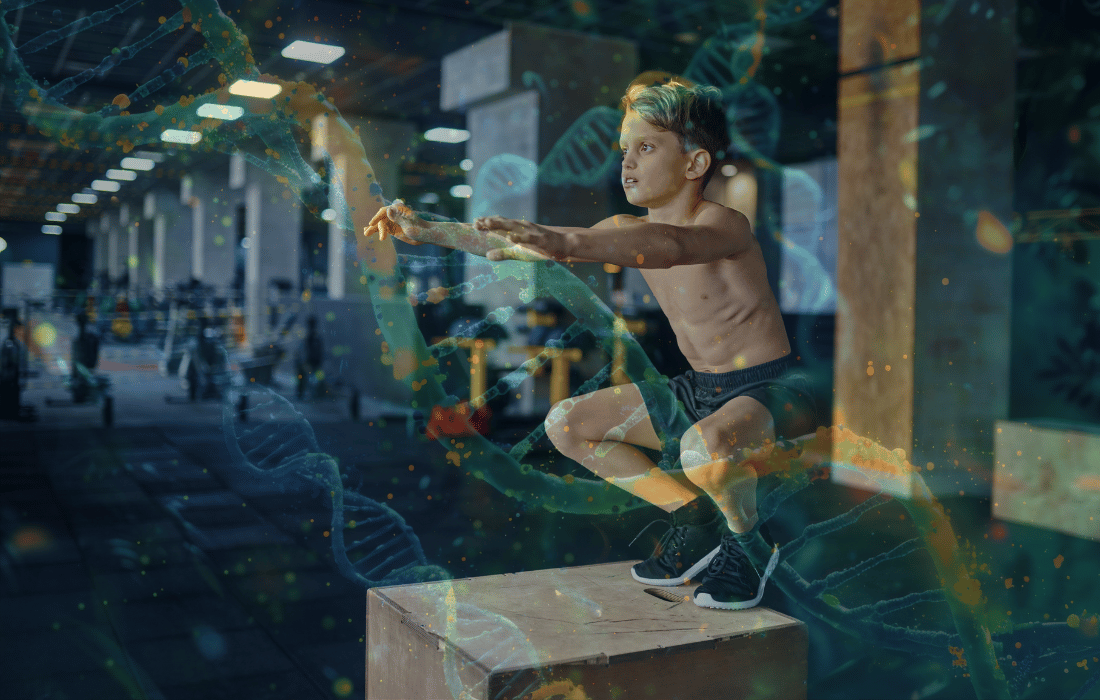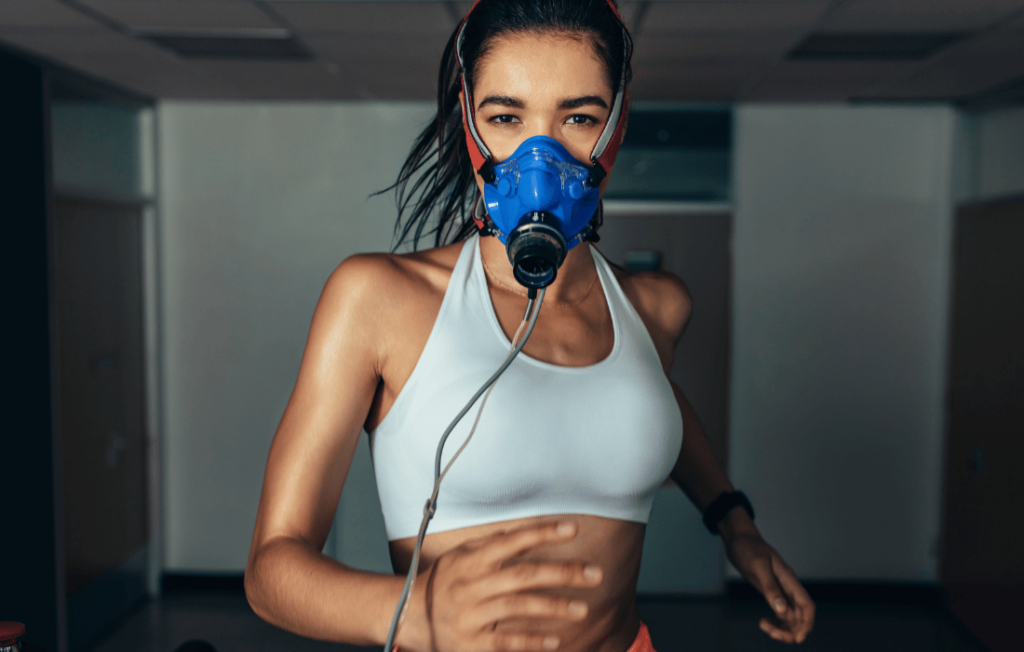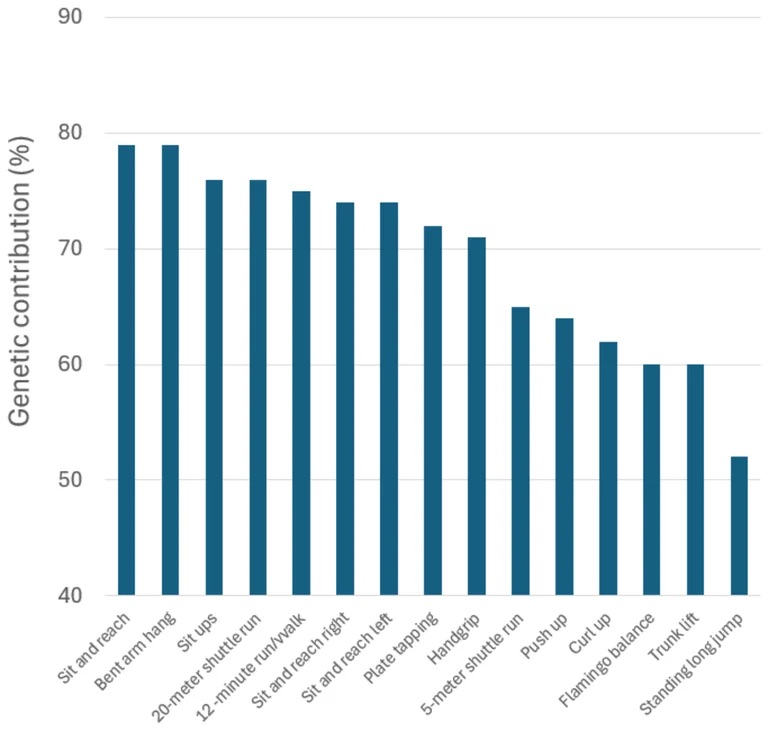When it comes to athletic success, we often hear about talent, training, and sheer determination. But there’s another factor that’s often overlooked: genetics. Just as DNA influences our eye color or height, it also significantly shapes how our bodies perform under physical stress, recover from exertion, and adapt to training. Understanding the genetic edge could be a game-changer for athletes striving for peak performance.
In this article, we’ll explore how genetic traits impact athletic ability, dive into the science behind key genetic markers, and discuss how athletes can use this information to optimize their training and recovery. Whether you’re a weekend warrior or a professional competitor, the insights here could unlock new potential in your fitness journey.
The Building Blocks of Athleticism
Genetics influence a variety of factors critical to athletic performance. While training and environment are undeniably important, your DNA provides the blueprint for your body’s capabilities. Here are some of the key areas where genetics come into play:
1. Muscle Fiber Composition
Muscle fibers come in two main types: slow-twitch (type I) and fast-twitch (type II).
Slow-twitch fibers are better suited for endurance activities like long-distance running or cycling. They generate less force but sustain activity for longer periods.
Fast-twitch fibers, on the other hand, are designed for explosive power and speed, making them ideal for activities like sprinting, weightlifting, and combat sports.
The proportion of these muscle fibers in your body is largely determined by genetics. For example, elite sprinters often have a higher percentage of fast-twitch fibers, while marathon runners excel with a predominance of slow-twitch fibers. While training can enhance the performance of both fiber types, it cannot change the genetic baseline.
2. VO2 Max and Cardiovascular Efficiency
VO2 max, or the maximum amount of oxygen your body can use during exercise, is a critical measure of aerobic fitness. Studies show that genetics account for about 50% of the variance in VO2 max between individuals. Athletes with a naturally high VO2 max have a distinct advantage in endurance sports, as their bodies can deliver oxygen to working muscles more efficiently. However, training also plays a significant role. While your genetic ceiling for VO2 max is predetermined, consistent endurance training can help you get closer to your maximum potential.
3. Recovery and Injury Risk
Recovery speed and injury susceptibility are other areas influenced by genetics. Variations in genes like COL5A1 and COL1A1 affect collagen production, which impacts ligament and tendon strength. Athletes with certain genetic profiles may be more prone to ACL tears or tendonitis, while others might recover faster from muscle strain. Additionally, genes like ACTN3 (dubbed the “speed gene”) and IL6 (related to inflammation) influence how your muscles repair and grow after workouts. Understanding these genetic factors can help athletes tailor their recovery strategies to reduce downtime and prevent overtraining.
The Role of Genetic Testing in Sports
With advancements in technology, genetic testing has become accessible to athletes at all levels. Companies now offer DNA testing kits that analyze markers related to fitness, nutrition, and recovery. Here’s how athletes can use genetic insights to optimize their performance:
1. Personalized Training Plans
Genetic testing can reveal whether an athlete is predisposed to excel in strength, power, or endurance. Armed with this knowledge, coaches can design training regimens that play to an athlete’s strengths while addressing potential weaknesses. For instance, an athlete with a higher proportion of fast-twitch fibers might focus on explosive movements and anaerobic conditioning, while an endurance-dominant individual might prioritize aerobic capacity and stamina.
2. Nutritional Optimization
Genes also influence how our bodies metabolize nutrients. Variants in genes like FTO and PPARG affect fat metabolism, while others impact carbohydrate sensitivity or the ability to absorb certain vitamins. By understanding these genetic nuances, athletes can fine-tune their diets to support energy production, recovery, and overall health.
3. Injury Prevention
Identifying genetic markers linked to injury risk allows athletes to take proactive measures. For example, an athlete with a higher risk of ligament injuries might focus more on mobility and stability exercises, while someone prone to inflammation could prioritize anti-inflammatory foods and recovery techniques.
The Everlasting Debate of Nature vs. Nurture in Sports
A 2024 study published in Medicine & Science in Sports & Exercise highlights the intricate interplay between genetics and environment. Researchers led by Karri Silventoinen analyzed data from 198 twin pairs aged 6 to 18, using 15 fitness tests to determine the influence of genetics versus environmental factors on fitness traits. The study found that genetic contributions ranged from 52% (standing long jump) to 79% (sit-and-reach flexibility test).
Interestingly, flexibility was found to be the most genetically influenced trait. This aligns with anecdotal evidence, such as the story of the article’s author, who struggled with flexibility despite consistent effort. The study also revealed that aerobic fitness, measured by the 12-minute run, had a high genetic contribution, debunking the notion that endurance is purely trainable. These findings highlight the importance of understanding your genetic baseline to maximize performance.
Surprising Insights on Trainability
The study emphasized that genetics influence not just baseline performance but also trainability. For example, explosive power, measured by the standing long jump, had lower heritability than flexibility or endurance. This suggests that while some traits are largely innate, others can be significantly improved through targeted training. The distinction between untrained performance levels and trainability is crucial for athletes and coaches aiming to unlock potential.
Practical Applications for Everyday Athletes
You don’t need to be a professional athlete to benefit from understanding your genetics. Here are some practical ways to apply genetic insights to your fitness journey:
1. Tailored Workouts
If you’re genetically predisposed to excel in strength-based activities, it’s important to maintain a balanced approach. While building on your strengths, dedicating time to aspects of fitness that don’t come as naturally—such as endurance or flexibility—can lead to a more well-rounded athletic foundation.
For instance, integrating cardiovascular training or mobility work can complement your strengths and reduce potential weaknesses. If endurance is your strength, prioritize running, cycling, or swimming. This approach ensures you’re playing to your natural abilities while still challenging yourself.
2. Smarter Recovery
Genetic testing can help you identify whether you’re prone to inflammation or slower recovery. Incorporate strategies like cold therapy, mobility work, or specific supplements to enhance recovery based on your genetic profile.
3. Informed Nutrition Choices
Understanding your genetic predispositions to metabolize fats, carbs, and proteins can help you design a diet that fuels your workouts and supports recovery. For example, if you’re sensitive to carbs, a higher-fat, lower-carb diet might be more effective.
The Future of Genetics in Sports
As research continues to evolve, the integration of genetics into sports and fitness is only going to grow. In the future, we might see genetic testing as a standard tool for coaches, athletes, and even recreational fitness enthusiasts. Advances in gene editing, such as CRISPR, could further blur the lines between natural ability and engineered performance. For now, the key is to use genetic insights responsibly. Whether you’re a professional athlete or someone striving for personal bests, understanding your DNA can empower you to train smarter, recover better, and push your limits—ethically and sustainably.
Genetics may set the stage, but the performance is still yours to deliver. The interplay between nature and nurture is what makes athletic achievements so inspiring. So, lace up your shoes, hit the gym, and remember: your potential is in your hard work—and maybe a little bit in your genes.









